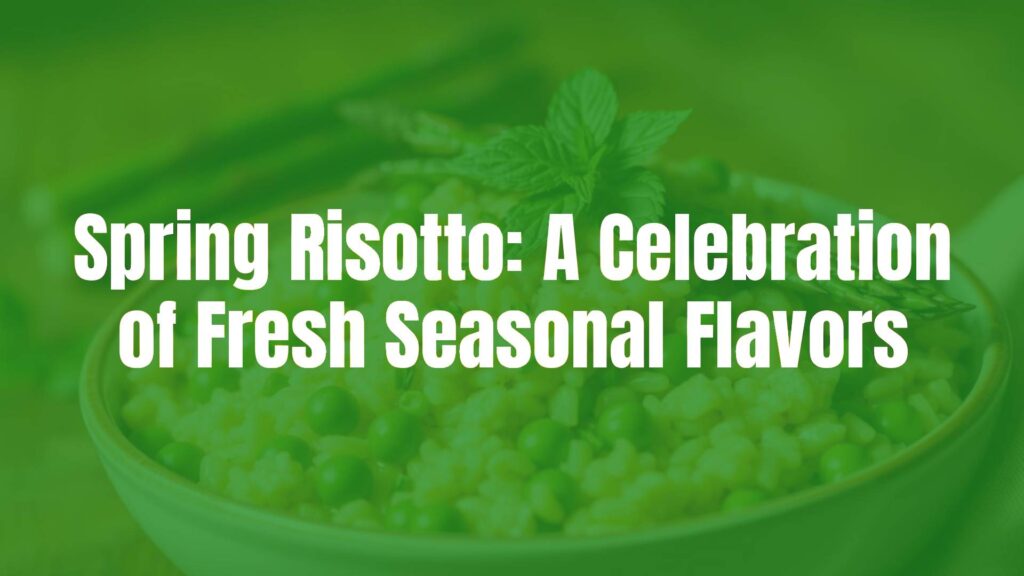Exploring Spring Risotto: An Ode to Italian Seasonality
Spring risotto is a vibrant Italian dish that beautifully captures the spirit of the season. With its creamy texture and the inclusion of freshly harvested vegetables, this risotto stands out as a quintessential example of how Italian cuisine celebrates local and seasonal produce. Known for its delicate flavor and striking appearance, spring risotto marks a refreshing departure from heartier winter fare, offering a taste of renewal and abundance.
What Sets Spring Risotto Apart
Unlike traditional risottos that might feature mushrooms or saffron, spring risotto is characterized by its use of tender, green vegetables such as asparagus, peas, fava beans, and sometimes baby spinach or zucchini. These ingredients not only contribute to the dish’s lively color palette, often accentuated by fresh herbs like mint or chives, but also lend a subtle sweetness and crisp-tender bite. The classic creamy base, achieved through the slow stirring of arborio or carnaroli rice, highlights these flavors and provides a luxurious mouthfeel.
Historical Context and Regional Relevance
Risotto as a culinary tradition originated in Northern Italy, particularly within the Lombardy and Veneto regions, where rice paddies abound. The concept of spring risotto developed as Italians increasingly emphasized cooking with what was immediately at hand, making use of the treasured bounty of the spring harvest. While you may find variations throughout Italy, the dish is especially celebrated in the north, where spring vegetables thrive in the fertile Po Valley. Its appearance on the table often signifies the start of the warmer months and serves as a reminder of Italy’s deep-rooted connection to the land.
Core Ingredients and Techniques
The success of spring risotto hinges on a handful of staple components: short-grain Italian rice (such as arborio, carnaroli, or vialone nano), a flavorful vegetable or light chicken broth, and seasonal vegetables. The rice is traditionally toasted in olive oil or butter, followed by gradual additions of broth, allowing the starches to release and create a naturally creamy consistency. Careful attention is paid to the timing of the vegetable additions, ensuring they retain their color and a pleasant firmness. A final touch of grated Parmigiano-Reggiano and a pat of butter (the classic mantecatura) enriches the risotto while fresh herbs brighten its flavor.
Variations and Ingredient Substitutions
Spring risotto is remarkably adaptable, making it easy to personalize. Common variations may include the addition of shelled beans, leeks, or wild garlic, depending on local availability. While some versions opt for goat cheese or ricotta to complement the green produce, others might infuse the dish with lemon zest for extra brightness. For a vegan interpretation, butter and cheese can be swapped with plant-based alternatives without compromising the dish’s core character. Gluten-free by nature, spring risotto also suits a range of dietary needs.
Pairings and Serving Suggestions
Spring risotto shines as a standalone main course, especially when served al dente and piping hot. It can also be featured as a primo piatto (first course) in a traditional Italian meal. Pair it with a crisp white wine such as Pinot Grigio or Soave, whose acidity complements the subtle richness and fresh flavors. For an added touch, a side of marinated artichokes or a light salad can enhance the meal. Regardless of how it’s served, spring risotto encapsulates the essence of Italian springtime on each plate.

